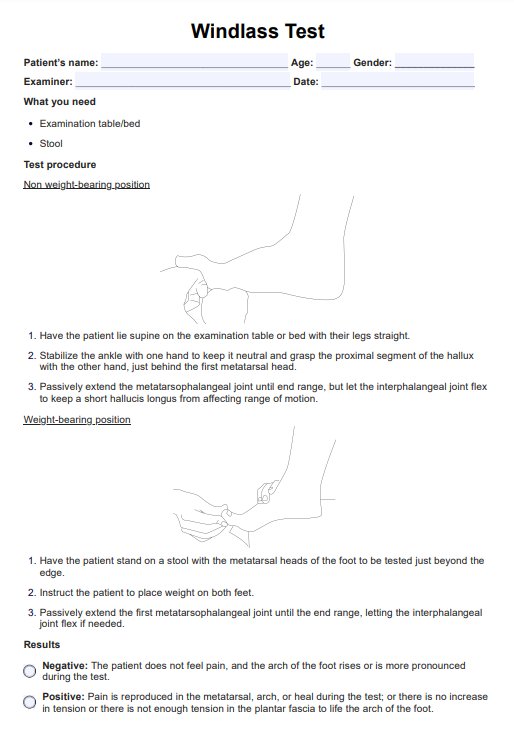The windlass effect refers to the mechanism by which the plantar fascia tightens and supports the arch of the foot when the toes are dorsiflexed. The plantar fascia formed the tie-rod from the calcaneus to the phalanges. This mechanism helps stabilize the foot during activities like walking and running.

Windlass Test
Learn how the Windlass Test effectively assesses plantar fasciitis by evaluating the plantar fascia's integrity. Use our template for consistent and accurate testing.
Windlass Test Template
Commonly asked questions
The Windlass Test has shown high specificity for diagnosing plantar fasciitis, especially in weight-bearing positions. Studies have reported 100% specificity in a positive weight-bearing test, though sensitivity can vary depending on the testing method.
The test may reproduce pain if the patient has plantar fasciitis, particularly when the plantar fascia is stretched. However, it is generally not painful for individuals without plantar fasciitis issues.
EHR and practice management software
Get started for free
*No credit card required
Free
$0/usd
Unlimited clients
Telehealth
1GB of storage
Client portal text
Automated billing and online payments











